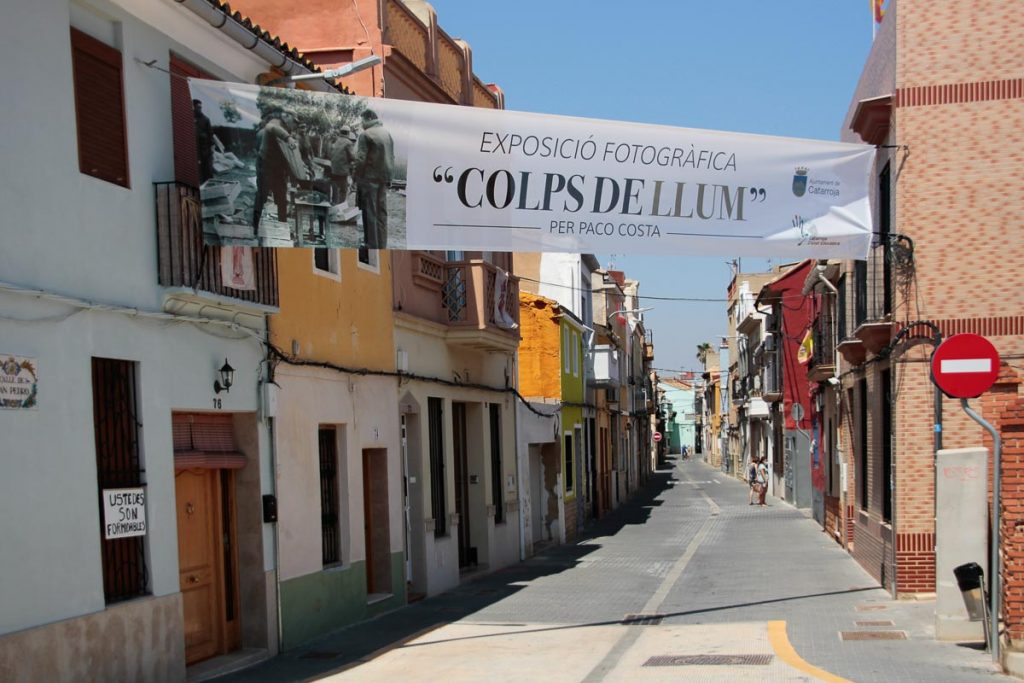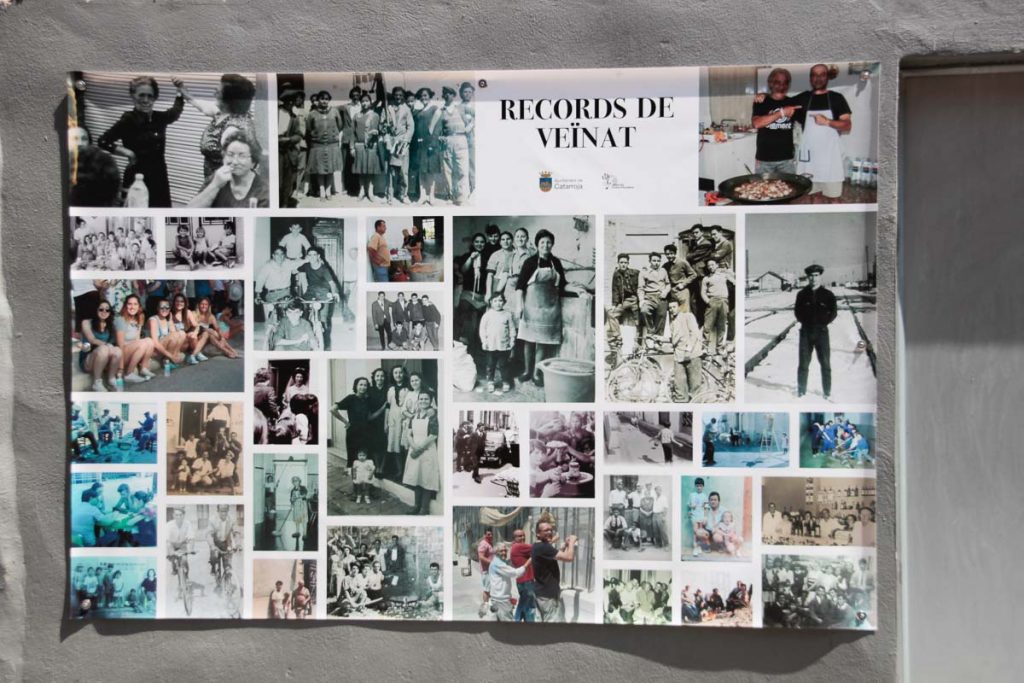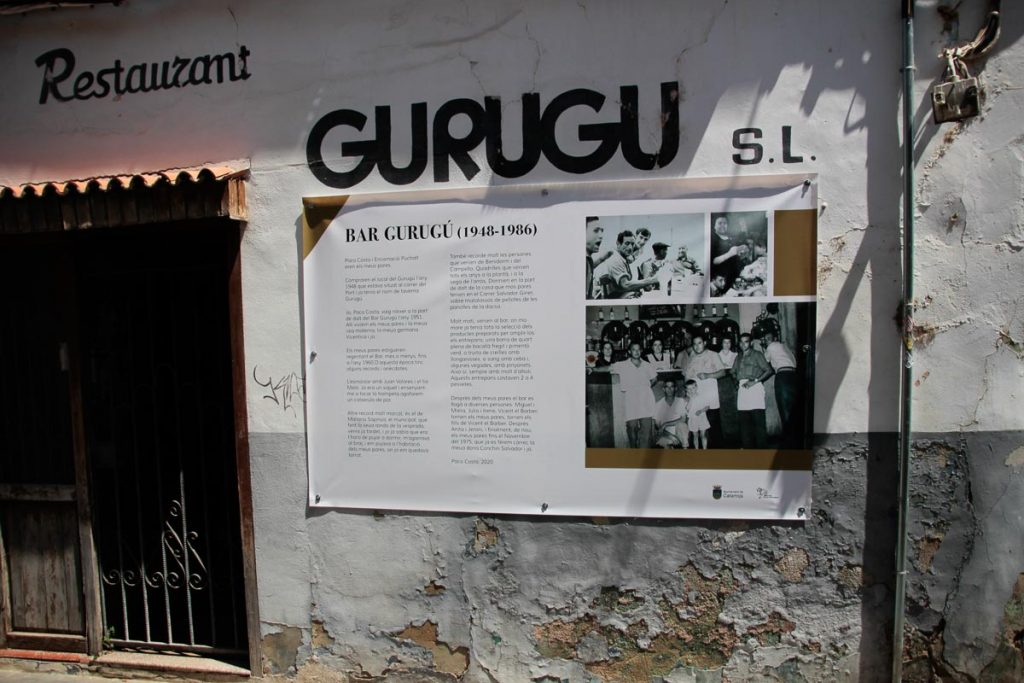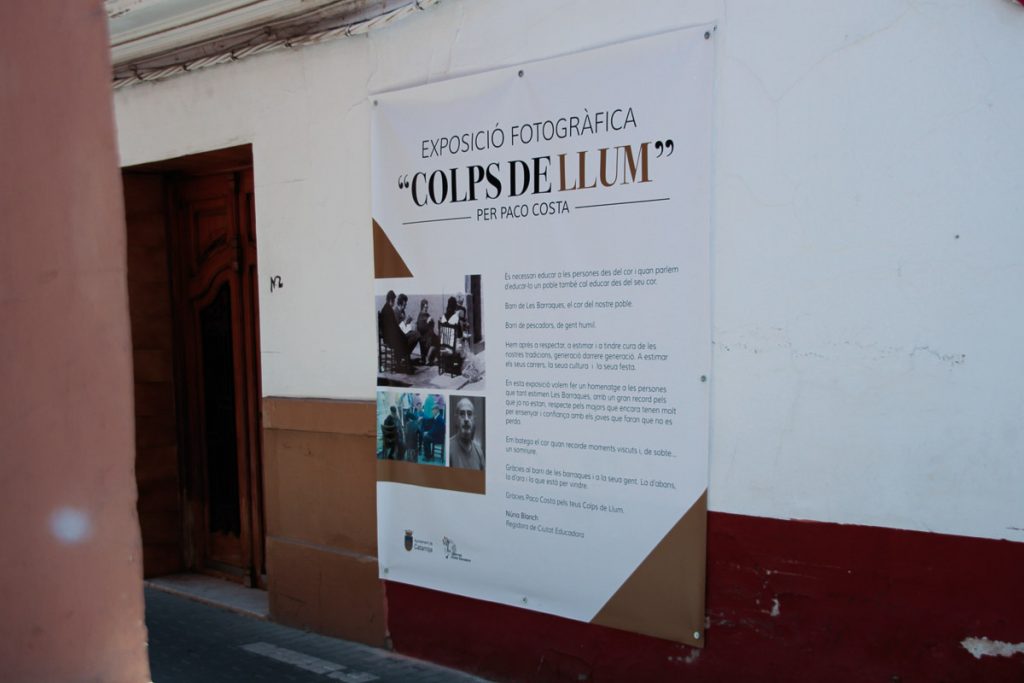Memory is the internal preservation of the past,
but it is also the only thing that sheds light on the present
and gives meaning to possible futures.
El tramvia groc (The Yellow Tram). Joan F. Mira
One of humanity’s most ingrained and imaginative fantasies is the ability to travel through time—visit the past, see what life was like, and, if it were possible, fix mistakes to improve the future. With photography, this dream becomes a reality. Through the lens of a camera, we can revisit the past and, from those images, envision possible futures.
That’s Colps de Llum, Paco Costa’s photo exhibition.

Paco Costa
Paco Costa is an amateur photographer with the charisma of someone who spent many years running his own restaurant, Gurugú, one of the most iconic spots in the Les Barraques neighborhood. He’s a lover of humanistic photography and understands that photography is a space for connection and communication.
A few months ago, he created a Facebook page called Colps de Llum, where he shares his own photographs as well as pictures from his family album, all taken in Catarroja’s “Barri de Les Barraques,” the neighborhood where he has lived his entire life. Les Barraques is an iconic part of the town, historically a fishing district of the Albufera, known for its unique festivals, traditions, and its rich culture and authenticity.
After the first photographs were shared on social media, some of the neighbors began to collaborate, and the project has continued to grow. As a result, the Catarroja City Council, as part of its Ciudad Educadora (Educating City) initiative, decided that these images shouldn’t just remain on a screen. They proposed bringing them out into the streets, in the very neighborhood where they were taken, with both past and present residents. The aim is to showcase the history while also highlighting the present, which shapes the possible futures.
Since late June 2020, the Colps de Llum exhibition has been open to the public on Carrer Sant Pere in Catarroja, Valencia. It’s a family album of the Les Barraques neighborhood, capturing its people, celebrations, streets, and transformations—an album built photo by photo by Paco Costa.


Family Album
A project like this can be compared to flipping through a family photo album: it’s transformative, enriching, and deepens the roots and pride of belonging to the place where you live.
We change society when we truly see people, when we understand their experiences and history, when we find common ground and see ourselves reflected in others.
When analog cameras were used, the time spent before taking a photo was crucial—slow and deliberate. It wasn’t just about capturing a moment to last but also about carefully considering the framing, appearance, and light. These are the family albums of the past, filled with gatherings and celebrations. So many decisions go into a single image that, inevitably, the photograph speaks with the voice of the person behind the camera—their identity, culture, and beliefs. In Colps de Llum, we hear Paco Costa’s voice, but also the voice of the identity, culture, and beliefs of a family and a neighborhood.



Memoria (Memory)
Dreams are images. Imagination, as the word suggests, is made of images. Memories are images. Our minds record a vast amount of information in the form of images, making them an essential element in activating memory.
However, memory is fragile, and our recollections are subject to the vulnerability of the human brain. Though we easily forget, we are horrified by the thought of what slips away. That’s why photography fascinates us.
The images in Colps de Llum are memories. With a single image, we can relive, recreate, and recall; we can linger over it, searching for details, expressions, or experiences. Photography soothes our nostalgia for the past by capturing lived moments and familiar streets. People remain imprinted on the photograph, and their memory is revived amidst the layers of recollections that dwell in our minds.

The evocative power of images enables us to verbalize and retrieve forgotten memories and stories that form part of both individual and collective memory. In this way, the photographic image becomes a powerful tool for sparking historical reflection and memory in anyone who visits Colps de Llum. Though these are images of one neighborhood, visitors will undoubtedly be reminded of their own.
Narrative
An image preserves the narrative of the moments it immortalizes—stories that, when told by those who lived them, can enrich the observer’s experience. Walking along Carrer Sant Pere means encountering some of the very people featured in the images, returning home with an anecdote or story, told in the first person but transformed into a shared story for all.

Identity and Sense of Belonging
Photographs bear witness to the growth of both society and individuals. They make the faces of those no longer present visible to future generations, foster self-recognition, and help to strengthen and consolidate personal identity.
Photography is also a form of collective memory, transcending individual interest and becoming remnants of the past—visual records of shared experiences. We can speak of a collective visual memory that belongs to all citizens, shaped by common experiences and shared spaces.

Future Generations
In times of constant change, ignorance of historical processes leads to a lack of understanding of our present, creating a society without reference points—uprooted and disengaged.
The future must be built on an understanding of who we were and where we came from because a sense of belonging and social cohesion can only exist when a community knows its history.
Paco Costa’s stories, captured in this unique family album, become a valuable and original resource for preserving memory, fostering knowledge, and nurturing a sense of belonging for future generations.
Colps de Llum reminds us that to move forward, we must first look back—to visit the past to understand where we come from and who we are. Only from this foundation can we create a tolerant and transformative future.

Exhibition: Colps de LLum
Location: Carrer Sant Pere. Catarroja-Valencia
Development: Councillorship for the Ciudad Educadora (Educating City) initiative of the Catarroja City Council
Photographs and Photo Archive: Paco Costa
Curator: Nuria Blanch
Design: Paula Vázquez Aliques
Production: Gescom Print
Technical Support: Amparo Muñoz Morellà
Photography is both a first-order scientific and artistic exercise.
Through photography, we experience more of life,
as it allows us to observe things more closely and for longer periods
The fleeting nature of our memories transforms into a rich album of images.
Life passes, but images remain.Los encantos de la fotografía (The Charms of Photography).
Santiago Ramón y Cajal
Cómo citar este artículo
Al citar, reconoces el trabajo original, evitas problemas de plagio y permites acceder a las fuentes originales para obtener más información o verificar datos. Asegúrate siempre de dar crédito y de citar de forma adecuada.
How to cite this article
By citing an article, you acknowledge the original work, avoid plagiarism issues, and allow access to the original sources for further information or data verification. Make sure to always give credit and cite appropriately.
ANDANAfoto. (July 1, 2020). "The Family Album of a Neighborhood, Colps de Llum". ANDANAfoto.com. | https://andanafoto.com/en/the-family-album-of-a-neighborhood-colps-de-llum/.

